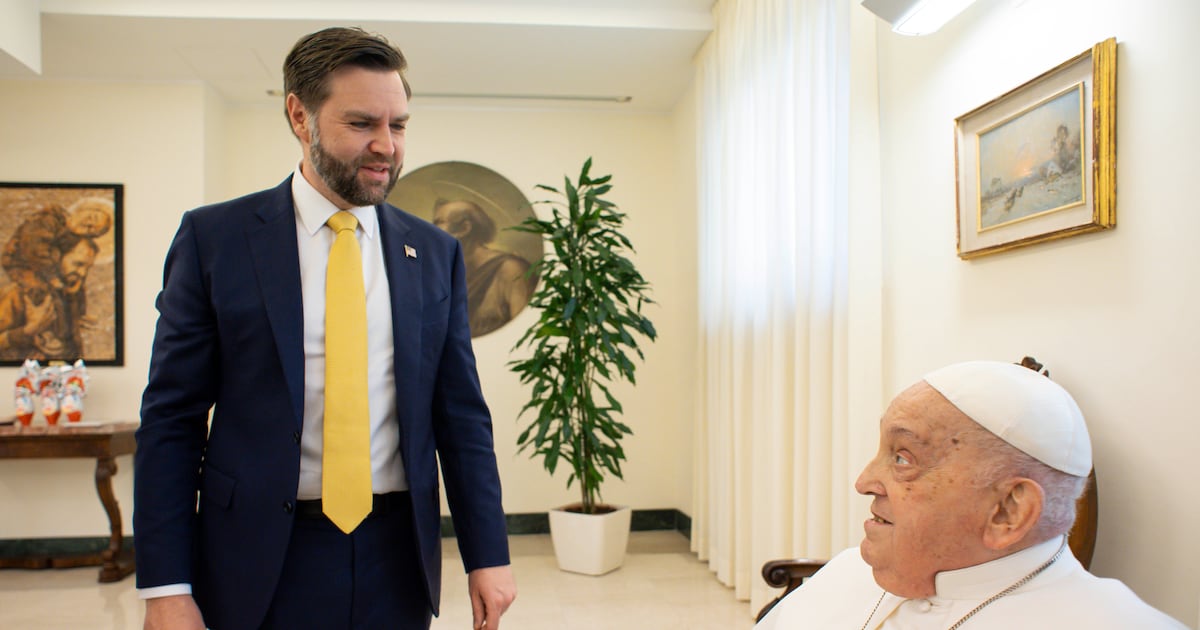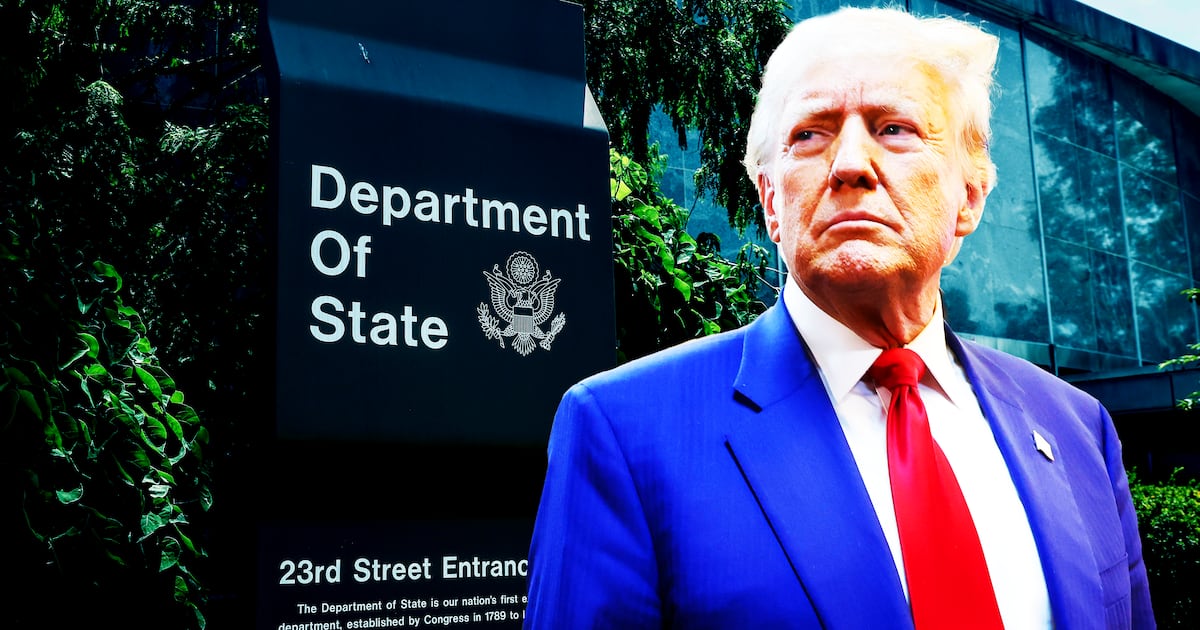In 1896, two young archaeologists, Bernard Pyne Grenfell and Arthur Surridge Hunt, began to excavate the ancient garbage dump at Oxyrhynchus (modern Al-Bahnasa) in Egypt. Their task was not to dust off the columns of monuments, unearth pottery, or trace the layout of ruined building; but to look for papyri in ancient towns in a pile of refuse.
What might seem to be a rather demeaning task to Indiana Jones yielded one of the most significant and surprising finds in archaeological history: thousands of fragments of texts, including some of the oldest fragments of the New Testament and other early Christian writings. In fact, in the very first volume of Oxyrhynchus Papyri (1898), Grenfell and Hunt revealed the first fragment of a previously unknown collection of apocryphal sayings of Jesus (now known to be the Gospel of Thomas). Over the past century, scholars have been slowly combing through these fragments.
Yesterday, the Egyptian Exploration Society, the nonprofit organization that acts as curators of the Oxford-based Oxyrhynchus Society, announced a new discovery: a late second- or early third-century CE fragment of the first chapter of the Gospel of Mark, just published in The Oxyrhynchus Papryi Volume 83 (2018), edited by distinguished Oxford academics Daniela Colomo and Dirk Obbink. In what must be the archetypical example of the expression “one man’s trash is another man’s treasure,” this pile of ancient refuse has produced one of the oldest fragments of the oldest Gospel story (Mark is believed by scholars to be the earliest Gospel.) This makes it a substantial and significant discovery for those interested in the history of Christianity, the evidence of the dating of the books of the Bible, and the history of book-making. But it also comes with a substantial mystery surrounding its origins, its dating, and its potential connection to the ubiquitous Green family, the owners of Hobby Lobby and the founders of the Museum of the Bible.
Despite its publication having just been announced this is not the first time that scholars have heard about the existence of this early copy of Mark. Rumors of this fragment have circulated since February 2012 when, in a debate with well-known agnostic scholar Bart Ehrman, evangelical text critic Dan Wallace announced that he had seen a “first-century Mark fragment.” Wallace indicated that his source for the dating of the manuscript was “a high ranking papyrologist.” Given that almost all (if not all) our other New Testament papyri date to the second century or later, this would be a huge discovery. Naturally, other scholars wanted to see the text, but Wallace was unable to comment further, stating shortly after the debate that he had signed a non-disclosure agreement.
Over the following years other evangelical scholars would occasionally mention this text, always with the first-century date and almost always with the caveat that they too were unable to discuss it further. At one point it was suggested by the scholar Craig Evans, again in the context of an evangelical conference, that the papyrus had been extracted from the cartonnage (papier-mache filling) of an ancient Egyptian funerary mask. This claim was eventually walked back, and many scholars, in the evangelical community and beyond, came to believe that either the first-century Mark was grossly misdated or, perhaps, did not really exist at all.
The appearance of a very early Mark fragment in the recently published Oxyrhynchus volume, therefore, immediately raised eyebrows, and it was not long before Dan Wallace confirmed in his blog that, indeed, this was the very manuscript that he had been referring to back in 2012. The Egyptian Exploration Society has also stated that the new fragment is the same manuscript that was discussed on blogs over the past few years.
How, then, did first-century Mark become second- or third-century Mark?
Wallace has generously admitted that the early dating he announced in his debate with Ehrman was mistaken and apologized for the misinformation. He further added that representatives for what he thought was the owners of the fragment had “urged” him to say that it was early so that news of the discovery would “go viral.” (Wallace also stated that they pushed the early date despite the fact that the papyrologist who had initially dated it to the first century had since revised his opinion significantly.) This would make sense on two fronts: on one hand, to help spread the common evangelical claim for the broadly-speaking uncorrupted transmission of the biblical text from Jesus down to the present (the claim that Wallace was making in his debate with Ehrman); and, on the other, to help increase the value of the fragment itself on behalf of those who Wallace thought were its owners.
Those putative owners, it seems reasonable to conclude, were the Green family. There are a number of reasons to conclude this. First, many of those who referred to the papyrus, including Wallace and Evans, were involved in some way with the Green Collection, the private collection of the Green Family, the owners of Hobby Lobby. Second, if the Green family owned the papyrus, it would make sense that no one involved could discuss it. As we discussed in our book Bible Nation, NDAs are standard practice for employees of Hobby Lobby, especially for scholars who are studying artifacts from the Green Collection. Finally, when we asked Steve Green in 2015 about first-century Mark, he told us, “At some point it was like, this is an item I want to pursue.” All of this seemed to suggest that the fragment had been acquired by the Green family, as Wallace believed.
Yet it had never appeared in public, neither at the Museum of the Bible nor in any of the Green-sponsored traveling exhibitions. The only remaining clue to its location was an interview at the National Conference on Christian Apologetics, shot on a cell phone and posted to YouTube, in which Scott Carroll, the former director of collections for the Green Collection, told the Christian apologist Josh McDowell that he first saw the fragment on the pool table in the office of American-born Oxford papyrologist Dirk Obbink.
That is the same Dirk Obbink who is now publishing the Mark fragment and who was the longtime general editor of the Oxyrhynchus collection at the University of Oxford, where Obbink is a professor, a highly regarded classicist and papyrologist, and winner of a MacArthur “genius grant.” It is clear that Obbink is the “eminent papyrologist” Dan Wallace believed had dated the Mark fragment to the first century.
Obbink has long been associated with the Green family and Hobby Lobby, though some of the connections are hard to discern. Many scholars who joined the Green Scholars Initiative, from its initial creation onward, did so, they told us, because they trusted Dirk Obbink, who was part of the advisory team. Obbink has appeared in Green Collection publicity materials, has participated in Green-sponsored events, has promised graduate students positions at Oxford partially funded by the Green family, and has consulted with the Greens on acquisitions. Yet Obbink refused to discuss “first-century Mark” or the Green Collection with us as we researched our book in 2015, then claiming that he is “not involved in the study of [the Green] collection.” (That same year, when we spoke with Steve Green, he told us that Obbink was, at that very moment, visiting monasteries in Georgia—the country, not the state—looking for manuscripts on behalf of the Greens.)
All of this may serve to obscure, rather than clarify, the origins and status of the Mark papyrus. For while Wallace believed it to be owned by the Greens, and it had been seen on Obbink’s pool table, we are now told that it had been safely ensconced—if long unidentified—in the Oxyrhynchus collection at the University of Oxford since the turn of the 20th century.
Was the Mark fragment ever for sale? If it belonged to the Oxyrhynchus collection, it shouldn’t have been. It is, after all, a priceless artifact and valuable cultural property. But statements by both Scott Carroll and Dan Wallace continue to affirm that it had been offered for sale, even if the sale was never completed. Though he denies pressuring Wallace about the date of the manuscript, Carroll admits that he was the representative who was acting for the Greens. Who was compelling Wallace, Evans, and others to sign non-disclosure agreements if not the Green family? And if the Green family and its representatives did not at least have an interest in acquiring the piece, why would they know (or care) so much about it? Carroll (who left the employ of the Green Family and Museum of the Bible in 2012) has said that, until this week, he thought that the Greens had in fact purchased it. Most strikingly, according to Carroll, he was offered the papyrus for sale by none other than Dirk Obbink himself.
Obbink, according to Carroll, “regularly sold papyri to the Greens.” Carroll told The Daily Beast that he first saw this particular manuscript on a visit to Obbink’s office in 2011. “[Obbink] showed me with great excitement what he said was a late-1[st] but not later than an early 2nd century papyrus of Mark 1. It is the same papyrus that he just published. It was in a white fold of paper… On the corner of the pool table in his office on a stack of other papyri he was showing me for Green’s consideration. He went into detail about his confidence in the dating… He did not give any answer as to where it came from or who it belonged to. I asked him about the value and he hesitated and he said at one level it was priceless because it was singularly unique.” When we asked Carroll for emails confirming his story he told us that he had to turn over all of that information to the Hobby Lobby organization when he left. Dirk Obbink, in a brief response to our inquiries, stated that any story that he tried to sell the Mark fragment to the Greens “is not true.”
The Egypt Exploration Society, for its part, is claiming that the manuscript was never for sale and was “probably” excavated in 1903. A number of papyrologists have confirmed to us that this is almost certainly true. Yet proof one way or the other is difficult to come by. The inventory system for the Oxyrhynchus collection is incredibly opaque. The presence of the Mark fragment on Obbink’s pool table is unfortunately also not particularly helpful: Obbink, like many of the previous important scholars associated with the Oxyrhynchus Collection, is known to have kept selections of “special” manuscripts in his office.
On the academic blog Evangelical Textual Criticism, Elijah Hixson has asked, “could a papyrus that was not obtained through Grenfell and Hunt’s expeditions be published as an Oxyrhynchus papyrus?” In other words: could someone try to pass off a manuscript as having come from the Oxyrhynchus dump if, in fact, it really originated elsewhere? Again, the lack of exhaustive cataloguing means that such a thing is possible. Hixson further asks the important question of why someone would choose to publish it this way. Hypothetically speaking, and given the international laws that regulate the movement of antiquities, publishing a manuscript under the auspices of one of the world’s most famous and highly regarded collections would enable someone to avoid tricky questions about the manuscript’s legality and provenance. It is possible that illustrious collections could be used to launder less pristine artifacts. If that was proven to have happened it would throw the reputation of the entire collection into jeopardy. (It is worth noting that similar issues have been raised regarding another one of Obbink’s more spectacular discoveries, a set of previously unknown pieces by the ancient poet Sappho.) Of course, if the papyrus was authentically from the Oxyrhynchus collection, then if someone did offer it for sale, to the Greens or anyone else, that would be even worse.
It is also possible, of course, and indeed more probable, that “first-century Mark” was something of a red herring all along: that it was in fact always dated later, was always part of the Oxyrhynchus collection, and was never legally available for sale. It is a little strange, but not unlikely, that previous scholars had not noticed that this was a fragment of Mark when it was first inventoried. As Brent Nongbri, author of the forthcoming book God’s Library: The Archaeology of the Earliest Christian Manuscripts, told us: “They were sorting thousands of pieces in the days before [searchable databases]. Literary works not immediately recognizable to the team may just have been flagged as ‘unidentified literary text, first century,’ or something to that effect.” There are, Nongbri mentioned, aspects of the fragment that “would strongly suggest it was a Christian text” and, if it were dated to the first century, it would be “sensational from a book history point of view regardless of its contents.” It’s hard to believe that something so sensational would have been allowed to sit around, but this is not an unprecedented state of affairs.
If the manuscript was always at Oxford in the Oxyrhynchus collection, it would be Carroll and Wallace who have been mostly responsible for the public confusion surrounding the papyrus, back in 2012 and today as well. And certainly many academics have questioned Carroll’s credibility in the past. Then again, someone must have alerted Carroll and Wallace (as well as other Green affiliates who have known about the Mark papyrus) to the existence of the fragment in the first place, and perhaps misled them about its dating.
What we are dealing with, then, is really an extended game of “he said, he said.” What remains most vexing is the existence of these otherwise inexplicable non-disclosure agreements.
One can only hope that firmer information about the origin of the Mark fragment will be forthcoming from the EES. For now, however, the announcement of this significant discovery is swaddled in controversy. Online, the most frequently used adjective used by scholars is “troubling.” And, for the first time in over a thousand years, something about this ancient pile of garbage stinks.







